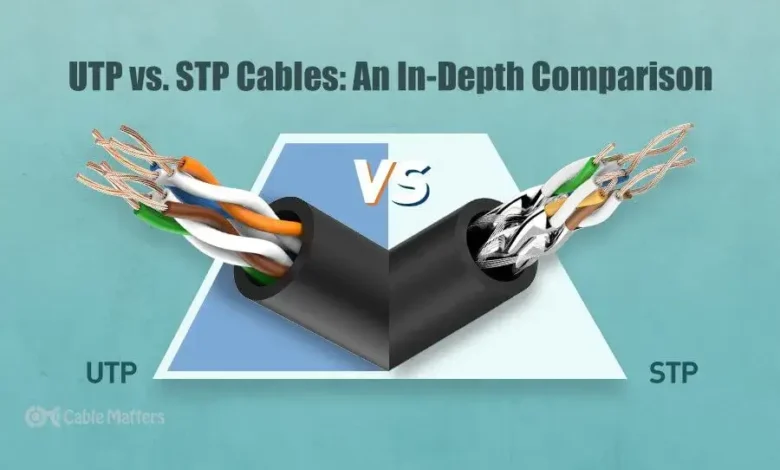UTP vs STP Cables: An In-Depth Comparison

Imagine you’re building a data highway for your network. But which lanes will you use? Unshielded twisted pair (UTP) or shielded twisted pair (STP) cables? Both are common, but their strengths and weaknesses differ. So, buckle up for an in-depth comparison to guide your choice!
Head-to-Head: UTP vs STP Cables
| Feature | UTP (Unshielded Twisted Pair) | STP (Shielded Twisted Pair) |
|---|---|---|
| Shielding | None | Metal foil or braid |
| Price | More affordable | More expensive |
| Flexibility | More flexible | Less flexible |
| Installation | Easier | More difficult |
| Noise Immunity | Lower | Higher |
| Transmission Range | Shorter | Longer |
| Ideal for | Home and small office networks, budget-friendly applications | Noisy environments, long distances, industrial settings |
Pros and Cons of UTP Cables
UTP Champs:
- Budget-friendly: UTP is the go-to choice for those on a tight budget. It’s significantly cheaper than STP.
- Easy to install: Their lack of shielding makes them lighter and more flexible, allowing for easier bends and tight corners.
- Versatile: UTP comes in various categories (Cat5e, Cat6, etc.) to support different speeds, making it suitable for diverse needs.
Weaknesses of UTP:
- Susceptible to noise: Unshielded wires are vulnerable to electromagnetic interference (EMI) from nearby power lines or machinery, causing signal degradation.
- Limited range: Over long distances, signal strength weakens in UTP cables, impacting data transmission.
- Not ideal for noisy environments: If you’re in an industrial setting with lots of EMI, UTP might not be strong enough for a reliable connection.
Pros and Cons of STP Cables;
STP Soldiers:
- Shielded guardians: Clad in metal armour, STP cables block EMI, ensuring signal integrity even in noisy environments.
- Superior performance: STP cables can handle longer distances and higher data transfer speeds without succumbing to signal issues.
- Reliable in industrial settings: They’re the workhorses of factories and similar environments where EMI is a constant challenge.
Weaknesses of STP:
- Pricey: The added shielding comes at a cost, making STP cables more expensive than their UTP counterparts.
- Less flexible: The shielding makes them stiffer and bulkier, posing installation challenges in tight spaces.
- Trickier to install: Terminating STP cables requires more expertise and specialized connectors.
Choosing Your Champion:
Picking the right cable depends on your specific needs:
- Budget and simplicity: If you’re on a tight budget and prioritize ease of installation, UTP is your champion.
- Noise and distance: If you’re in a noisy environment or need to cover long distances, STP is the armoured warrior you need.
Conclusion:
Both UTP and STP have their strengths and weaknesses. Consider your budget, noise levels, and transmission distance to choose the right cable for your data highway. Remember, a reliable network connection is crucial for a smooth-running digital life!
FAQs:
What’s the main difference between UTP and STP?
Shielding! UTP is bare, while STP wears a metal coat.
Noisy neighbour?
Go for STP for better signal protection against EMI.
UTP or STP for my home network?
UTP is likely sufficient unless you have major interference issues from appliances or power lines.


